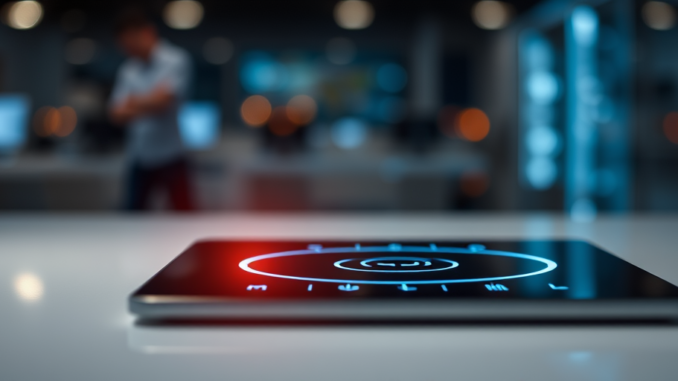
Summary
Researchers have unveiled a groundbreaking non-electric touchpad that utilizes pneumatic channels to sense touch, force, and location without electricity. This innovative technology opens doors for medical applications in MRI machines and other extreme environments where traditional electronic sensors fail. It also paves the way for advancements in soft robotics and rehabilitation aids.
TrueNAS by Esdebe: healthcare data storage that delivers value without sacrificing security.
Main Story
The world of medical technology? It’s constantly changing, isn’t it? New innovations are pushing the boundaries all the time. And this new sensor technology is a pretty wild one, a non-electric touchpad. It’s the first of its kind, I’ve heard. Imagine that! Instead of electricity, it uses pneumatic channels – a network of air-filled pathways. These clever channels detect touch, force, and location. Without needing any electricity. It’s quite a feat of engineering, really.
This is key: it means this device can operate in places traditional touchpads simply can’t. Think powerful magnetic fields, like inside an MRI machine. Traditional touchpads rely on electrical signals, and those just don’t work in such environments. This non-electric touchpad, though, it just shrugs off that interference.
Now, you might be thinking, what’s the big deal? Well, the medical applications are huge. For example, during an MRI scan, imagine they find a suspicious spot – a potential tumor. Instead of stopping the scan and scheduling a whole new procedure, a robot, guided by this touchpad’s sensor data, could perform a biopsy right then and there, no interruption to the MRI. It’s faster, less invasive, and frankly, it sounds a lot less stressful for the patient, doesn’t it? It’s not just biopsies either, it opens up a world of minimally invasive procedures within that MRI environment, improving safety and patient outcomes – seriously.
But it doesn’t stop at MRI machines. The fact it’s resistant to strong magnetic fields, well that means it’ll handle other harsh environments too. Places with high radiation, or where even a tiny electrical spark could be dangerous, places where your typical electronic sensors won’t last, these are not an issue for this touchpad. It has impressive durability, which expands its applications.
Also consider this. The touchpad uses soft silicone, making it flexible and adaptable. This means it fits perfectly into soft robotics and rehabilitation tools. Think about soft robots, the ones made of rubber, well, this touchpad would allow them to interact with things much more safely and precisely. This kind of tactile feedback could be huge. For example, imagine using it for assisting with delicate surgical tasks or for giving patients personalized physical therapy after injuries. It’s pretty amazing when you think about it.
Honestly, this non-electric touchpad is a significant step forward in sensor tech. Its ability to function in extreme conditions, plus its flexible design, well, it opens the door for so many uses. From making medical procedures easier in MRI machines, to improving soft robotics, and providing rehab, this device has the potential to change how we interact with the world. As research continues and the technology develops, we’ll see even more inventive applications, and that is something I am really interested to see, as the impact will be massive across many fields. That’s just my two cents, anyway.


So, it’s like the touchpad is just chilling in an MRI machine, no electrical drama? I wonder if it’ll develop a preference for the hum of the magnets and complain about regular room acoustics.
That’s a fun way to think about it! The idea of it developing a preference for MRI hum is quite amusing. It highlights just how different the operating environment is, compared to standard electronics. Imagine the applications in other high-interference settings!
Editor: MedTechNews.Uk
Thank you to our Sponsor Esdebe – https://esdebe.com
The flexible nature of the touchpad is fascinating. Its potential use in soft robotics and rehabilitation aids highlights the versatility of the technology, beyond just MRI applications.
Absolutely, the flexibility really is a game-changer! Seeing how it can adapt to soft robotics and rehabilitation tools opens up so many new avenues beyond the MRI applications. It’s exciting to see what innovative uses will develop as the technology progresses!
Editor: MedTechNews.Uk
Thank you to our Sponsor Esdebe – https://esdebe.com
So, these air-filled pathways, are they like tiny little bouncy castles for your fingers? I wonder if they get deflated after a particularly firm poke.
That’s a great way of putting it! Thinking about them as tiny bouncy castles does give a good sense of how they work with pressure and touch. It really highlights the physical, as opposed to electrical, aspect of the technology. Imagine how the material properties affect its sensitivity!
Editor: MedTechNews.Uk
Thank you to our Sponsor Esdebe – https://esdebe.com
So, instead of electricity, it’s like a tiny network of pneumatic postmen delivering touch sensations. I wonder if they have little air mail bags?